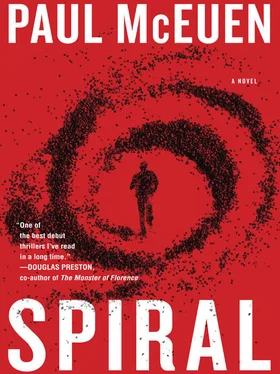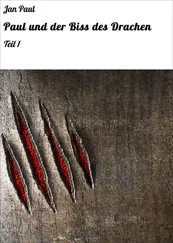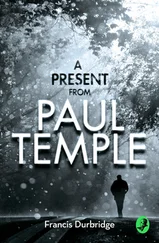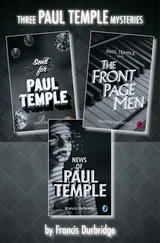LETTERBOX
 10
10 
JAKE COULDN’T SLEEP. HE TOSSED AND TURNED, THEN FINALLY gave up. He rose and made a pot of coffee, then set to pacing his apartment, the windows outside black with night. A niggling memory kept at him, a certain conversation with Liam as they had walked among the abandoned concrete bunkers of Seneca. At the time, Jake had thought that it was just an old man unburdening himself.
The two-lane road was empty as he drove through the predawn darkness, only the occasional farmer’s pickup passing in the opposite direction. Before the sun rose, he was thirty miles northwest of Ithaca on Route 96A, in the middle of a bucolic landscape of hills and farms. He topped a small rise and spotted his destination. It looked like an abandoned prison in his headlights; triple fencing, like layers of an onion, enclosed the ten-thousand-acre wasteland that was once the Seneca Army Depot.
Liam had told Jake the history. The Seneca Army Depot had been built on Roosevelt’s orders in the run-up to World War II, when Liam was still a student in Ireland. By the time battleships were aflame at Pearl Harbor and Liam was queuing up to enlist in the British Army, the Seneca Depot had more than five hundred concrete bunkers storing armaments, helping to feed the war machine.
After the war, new, larger bunkers were built to store nuclear weapons. Liam was in Ithaca by this time, starting the work that would make him famous. The depot acquired a fame of its own. At its peak, the depot was a small city employing more than ten thousand people, one of the largest facilities of its kind in the country. Jake remembered the newspaper photographs from later in the 1980s, when Dr. Spock, cheered on by thousands of anti-nuke demonstrators, climbed these fences to draw attention to the nuclear weapons inside.
Now no one was watching. With the fall of the Soviet Union, the depot was shuttered, officially decommissioned in 2000. It had been left to the deer, the willows, and the geese. A few chunks of real estate had been bitten off: a prison along one edge, a youth center on another. But the core of the depot was a ghost town, a concrete mausoleum, eight miles long and four miles wide, nothing but neglected roads and bunkers. It was one of the most isolated, least-trafficked spots in the state.
After parking outside the fence, he got out and sat on the hood of his Subaru. Half freezing, he watched the sun creep over the rows and rows of munitions bunkers. Every four hundred feet was another eerie concrete monolith, all long out of use. Beat-up roads cut between them, all slowly succumbing to weeds and grass. Jake had been inside one of the bunkers, a dank and musty place filled with mold and decaying leaves. They’d once stored nukes inside, Liam had said. The triggers to set them off were kept in a separate unit, hidden underneath a white building made to look like a guardhouse.
Liam had connections with the current keepers of the depot, a consortium of businessmen planning to use the bunkers as ultra-secure housing for computer servers. He had finagled a key to one of the gates, even gotten permission to come anytime. He was running a biology experiment with the herd of rare white deer trapped inside the fences, a test of genetic variability in a confined population.
Liam had told Jake he could think clearly here, sheltered from his schedule’s more immediate demands. Still, Jake thought the weight of the past was heavy in this place, banishing the trivial. At Liam’s urging, Jake had accompanied him here many times, the two men shooting the shit as they walked up and down the rows of concrete bunkers.
Their talk often turned to war, what they’d experienced and what the future held. Neither liked what they saw when they peered into their crystal balls. They discussed the arc of technology, how the last fifty years had seen a revolution of the small. With new levels of information command and control, this revolution was changing warfare. It was also changing the tools of battle themselves. Small was the new big, and the generals were finally getting the message.
The era of tanks and fighter jets battling on land and in the sky was drawing to a close. The wars of the future would be fought on small battlefields by tiny weapons striking from a thousand directions at once. The fight would take place inside computer networks, inside human bodies. Cyber-warfare. Swarms of semi-autonomous robots, such as the Crawlers. Biological weapons.
It was on one of these trips that Liam told Jake about the Uzumaki.
Jake had been stunned when Liam recounted the tale of the seven Tokkō with their deadly cylinders. About the Japanese submarine carrying one of the seven, its discovery by the USS Vanguard . Liam’s eyes had burned fiercely bright when describing the horrendous nuclear blast that had instantly destroyed the Uzumaki along with two hundred thirty-seven men.
“Bastards,” Liam had said. “Willoughby. MacArthur. They wanted it, the Uzumaki. And they got it. Kept it secret all these years. Covered the whole thing up, right along with the atrocities at Unit 731. Now that pisspot at the NSA, Dunne, has Detrick working on it again.”
Liam had given him an ironic smile. “Hell of a thing, isn’t it? A little fungus, more dangerous than all the weapons once stored here, a little bit of growth you could carry in a thimble.”
Jake now stared out over the bunkers.
 11
11 
THE NEW YORK TIMES OBITUARY RAN TO ALMOST A FULL PAGE.
LIAM CONNOR, RENOWNED BIOLOGIST,
ONE OF THE LAST LIVING FOUNDING FATHERS
OF MOLECULAR BIOLOGY, DIES AT 86
By Benjamin D. Ludgate
Liam Connor, Nobel laureate who unlocked the secrets of selective adaptation, died Tuesday morning in Ithaca, New York. His death was announced at Cornell University, where he worked and taught for sixty years. His body was found at the bottom of a gorge on campus. The circumstances of his death are under investigation.
A contemporary of James Watson and Francis Crick, the scientists who revealed the structure of DNA, Connor was best known for his work on mobile genetic elements, and for establishing that DNA resided not only in the nucleus but also in various other compartments in the cell. These ideas revolutionized cell and evolutionary biology.
Liam Connor was born in County Cork, Ireland, in 1924, the sixth child in a shopkeeper’s family. As a young boy, he was fascinated by plants and fungi, and he developed an encyclopedic library of these organisms based on his own classification system. When he was fourteen, his father took him to University College Cork (then Queen’s College), where he studied under the tutelage of Professor Seamus Bailey. Within a few years, he was considered the most promising young biologist in the country. In 1943 he married Edith Somerville, a poet and essayist to whom he would remain married until her death in 2004.
In 1942, Liam Connor enlisted in the British Army. For four years he served at Porton Down, the British chemical and biological weapons center, working on countermeasures to potential Axis weapons, including a brief period in Japan after the end of the war. In 1946, Connor emigrated to the U.S., spending three years doing classified work at Camp Detrick (later Fort Detrick) in Frederick, Maryland, on biological weapons countermeasures.
He moved to Cornell University in 1950, taking a faculty position in the College of Agriculture. He first embarked on a fungal taxonomy project, creating what would become the 400,000-specimen Cornell Plant Pathology Herbarium, a collection now managed by his granddaughter, Margaret Connor. Throughout his life, he would continue to travel the globe, looking for specimens for the herbarium, especially those from northeastern China and South America.
Читать дальше

 10
10 










